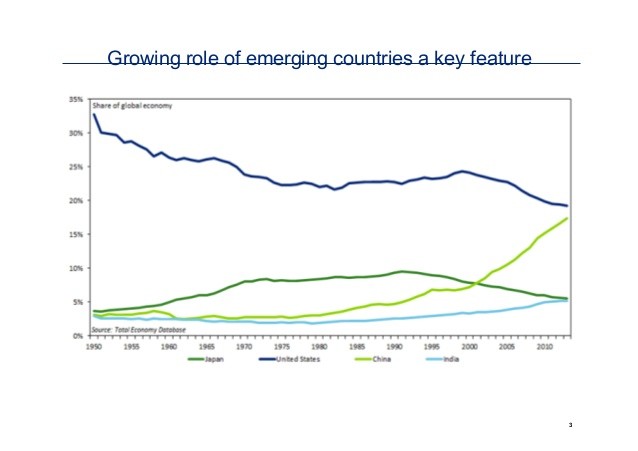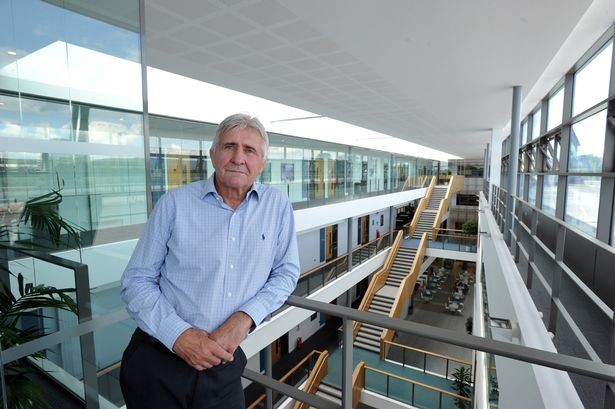Investment a key concept in Economics
Post on: 21 Апрель, 2015 No Comment

Investment is the value of machinery, plants, and buildings that are bought by firms for production purposes.
Investment plays six macroeconomic roles:
1. it contributes to current demand of capital goods, thus it increases domestic expenditure ;
2. it enlarges the production base (installed capital), increasing production capacity;
3. it modernizes production processes, improving cost effectiveness;
4. it reduces the labour needs per unit of output, thus potentially producing higher productivity and lower employment ;
5. it allows for the production of new and improved products. increasing value added in production;
6. it incorporates international world-class innovations and quality standards. briging the gap with more advanced countries and helping exports and an active participation to international trade.
Composition
Although capital accumulation takes place in many institutional sectors of the economy (firms, households, public sector,…), a narrower definition is used in national accountancy.
Investment is just new capital accumulation in business (both private and state-owned).
Household by convention do not invest, even if it does exist a capital accumulation in cars, computers, electric appliances, etc. that we include in their cumulative bundle .
Public expenditure is partly devoted to roads, railways, infrastructure, buildings (as for schools, hospitals,…). All this is clearly capital accumulation whose utility will last over time. Still, it is quite a common practice for investment in public sector being considered zero by convention.
Investment is classified according to the degree of directness with which it is linked to current and future sales:
1. inventories stock of finished goods, semi-manufactured goods, and raw materials in commercial premises, storehouses and producers’ plants;
2. equipment for direct production of services and goods;
3. transport and auxiliary machineries ;
4. office and general endowment for indirect workers and management;
5. any long-lasting improvement in those items;
6. industrial plants and service buildings ;
7. other buildings.
In today’s world, investment in immaterial assets is getting more and more important, as with the case of expenditure in Research & Development, human capital, software and other areas.
Financial investments in shares, obligations and other financial instruments are not considered as investment in a macroeconomic sense nor in national accountancy. The same is true for real estate exchanges of used buildings (both residential and non-residential).
When considering the issue of the creation and diffusion of innovation through investment, a crucial distinction should be made between complementary investments and competitive investments.
Determinants
At firm level, investment is determined by expected benefits as well as funds. both in term of availability and cost (interest rate ).
Benefits relate to the effects of investment in terms of increased value added, reduced costs. larger production, higher competitiveness. Hence, profits are expected to be higher, too. The value over time of these benefits (and profits in particular) are compared to the investment costs.
The temporal profile of costs and revenues will be important in the decision whether to undertake the investment or not.
In many decision processes and routines. the value over time of benefits will be discounted through a subjective interest rate to keep into account time distance and uncertainty. In others, the decision will be based on more strategic and vital arguments. A new vision of the competitive environment and of the global trends can bring to invest in surprising directions.
F unds for investment can be obtained thanks to the following items:
1. self-financing, in turn due to:
1.1. cumulated past profits ;
1.2. injection of new financial capital from the owners;
1.3. amortization, i.e. accountancy allowance for past investment, considered now as current costs but not corresponding to any current expenditure;
1.4. extension of equity by new shareholders, as it happens with relatives sending remittances to home business;
2. loans from banks and other financial institutions:
2.1. long-term credit at fixed or variable interest rate in domestic or foreing currency;
2.2. short-term credit;
2.3. micro-credit in the case of very small business;
3. capital market finance, through the emission of obligations as well as through the issue of shares in the stock market (primary market). The following price fluctuation do not directly have any impact on financing the firm. But it is true that further new emissions of shares often require positively-oriented capital markets.
4. seed money and expansion capital for new firms provided by venture capitalists and private equity funds;
5. public funds and incentives for investment from international, national, regional, local institutions.
However, the empirical evidence of microdata shows that investment — at micro level — is infrequent and lumpy. There are periods in which firms decide not to invest and periods of large investment episodes. For better understand the issues at stake see this paper.
Investment expenditure is a bet on future. If the bet is lost, the product does not find a remunerative market and much of the investment expenditure turns out to be a sunk cost that cannot be recovered. In the extreme case, investment is irreversible. Coupled with true uncertainty, irreversibility becomes a fairly important determinant of investment levels across industries, as this paper points out.
In the IS-LM model, interest rates are considered the unique determinant of investment. In fact, interest rates play three distinct functions:
1. they influence the discounted value of net benefits over time;
2. they determine the cost of loans from banks and the required rate of return for the owners and financing institutions;
3. they set the economic climate both for financial and real markets.
In all three function, a higher interest should trigger a lower investment. since the present value of benefits will be lower, finance costs higher and economic perspectives worse.

Still, there exists investments that are not based on interest rates considerations. For instance, firms have usually a very restricted number of investment projects, carrying them out when profitability is well above zero. A small change in interest rate would have simply no impact on each investment decision, thus on aggregate level as well.
By contrast, the effect of large interest rate changes may be highly asymmetric. a strong increase of interest rate can indeed provoke a fall in investment dynamics whereas a similar decrease may fail to induce investment, if real perspective benefits are lacking.
Other determinants of investment should be considered as, for instance, present and expected consumption and export .
Saturation of productive capacity represent a key references for firms’ decisions to invest. Expectations about future sales will affect investment if the current capacity is not enough to match the forecasted increase in demaned quantities and the firm is committed to fulfill all orders. Given a ratio of fixed capital to sales, the investment required would be (in a very simplified method of estimation) this ratio times the new additional expected sales.
Furthermore, new technology innovation and the need of imitating competitors’ adoption of innovation can also force firms to invest, in a process of diffusion that can be boosted by a conducive tax environment, both in terms of tax breaks and pro-diffusion-of-innovation tax.
Investment in real estate new developments and rejuvenation of existing areas are better understood in operations like urban regeneration.
Impact on other variables
Cumulated investments over time give rise to capital. opening the path to improvements in production conditions.
Production capacity. potential productivity . cost effectiveness. production and process quality will be all increased by properly-oriented investment. Export competitiveness should also rise.
Employment can fall if a labour substitution investment prevails with real output growing less than physical productivity. By contrast, other kinds of investment and economic situations give rise to an increasing employment. The quality and composition of employment also depend on the investment directions. For instance, green jobs significantly depend on wide investment in green sectors and technologies.
As a GDP component from the current domestic expenditure side, investment has an immediate impact on GDP. An increase of consumption rises GDP by the same amount, other things equal. Moreover, since income (GDP) is an important determinant of consumption, the increase of income will be followed by a rise in consumption . a positive feedback loop has been triggered (between consumption and income) by investment.
Because of this mechanism, imports will grow as well. More directly, investment is often directed to foreign machineries and goods, with an immediate increase of imports.
Long-term trends
Countries differ a lot in respect to investment levels and dynamics. Some countries have heavily invested, sacrificing current consumption and triggering an export-led growth. often based on manufacturing. Others keep investment at much lower levels with an unsecure growth path.
A large-scale investment effort in clean technologies and processes is seen as a conditions for coping with climate change. The our book on Innovative Economic Policies for Climate Change Mitigation puts forth the proposal of a closed long-term fund to influence investment decisions of private and public bodies.
Business cycle behaviour
With its short and violent fluctuations. investment is a clear source of the business cycle.
During the recovery, investment grow at a much faster pace than consumption or GDP, usually irrespective of interest rate movements.
On the contrary, the influence of interest rates on investment can be important at turning points. At peaks, consistent increase of the interest rate would drastically worsen the costs of existing loans for past investment. Disappointment from demand grow may combine with this effect to reduce investment dynamics.
Investment often peaks earlier than GDP, triggering a negative income-consumption multiplier, thus prompting a new recessionary direction.
At trough, low interest rates may be one of the very few good news for firms. Thus, combined with positive expectations, investment may start growing from the very low level at which they were.
Positive expectations toward the economy may also bring leading firms to invest earlier than the trough. In so doing they may even invert the business cycle.
On the other hand, investment in machinery may instead follow the lower trough, since the first recovery may simple use the existing, not-fully exploited capital.
Changes in government, with opposition going to the power, can exert an important effect on raising or abating the expectation of business in terms of the overall economic environment and for specific actions.
Needless to say, business cycles have many sources and paths, thus wide discrepancies with the previously presented scenario can arise.














